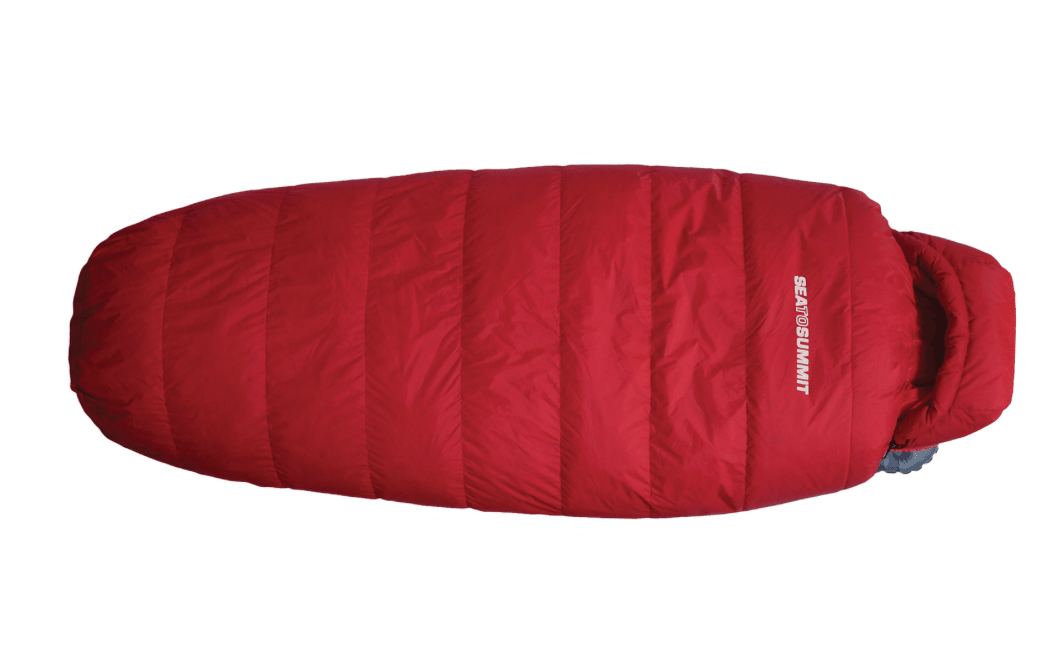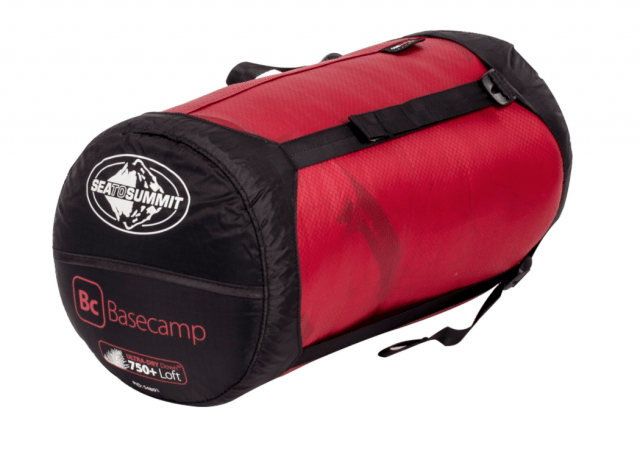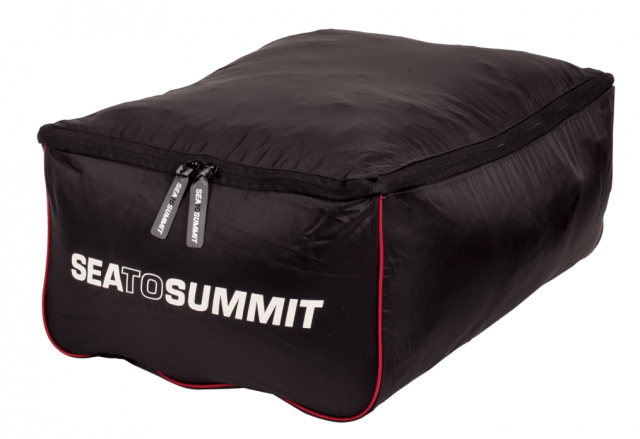Sleeping bag technology has not evolved all that much over the span of several decades. Bags have typically only been offered in rectangular or mummy shapes and filled with down or synthetic insulation. If you’re lucky, you might have had a choice between a right or lefthand zipper. All of that has changed in the last few seasons with an increasing number of innovative designs like the Basecamp BcII from Sea to Summit.
As the name implies, the Basecamp is not aimed at ultra-light pursuits. Sea to Summit has bags purpose-built for that use. The Basecamp is best suited for outings where a little extra comfort is the goal. At a whisper over 2.5 pounds for its 15ºF lower temperature rating, it’s far from heavy and the extra ounces are well spent on a number of worthy creature comforts.
Rectangular bags are preferred by many people for one singular reason––their generous wiggle room. The downside has always been the lack of a hood and compromised thermal retention when the temperature drops. The Basecamp BcII merges the best of both mummy and rectangular shapes with a wide cut paired to a properly designed hood and a slightly tapered foot box. The result is a bag with an efficient shape for thermal retention, but not nearly as confining as a traditional mummy.

Below the BcII are a series of straps designed to ensure it doesn’t wander off the sleeping pad mid-dream. The two middle keepers are detachable and made of thin strips of webbing. The nylon and lycra retention system at the foot of the bag is far more elaborate and creates a three-point harness I particularly like as it prevents my feet from falling off the sides or ends of the pad. The stretch lycra strap at the head of the bag is specifically positioned to retain a pillow. Many sleepers place their pillow within the bag making it nigh impossible to use the hood as intended. Sea to Summit’s solution is ingenious and I no longer have to search for my pillow in the middle of the night and can still cinch the hood snuggly around my noggin.
My favorite element of the Basecamp is the use of dual zippers on both sides. With the lower aspect of the bag firmly affixed to the pad, the upper half can be unzipped on both sides and pulled loosely over me like a traditional comforter. For lightweight escapes, or for warmer temperatures, the lower half can be detached completely, left behind, and the upper used on its own.




Like all Sea to Summit products, it’s the tiny details that stand out. The 750+ Ultra-Dry Down insulation is virtually waterproof and wrapped in a water resistant 30-denier nylon outer shell. A light but effective anti-snag guard ensures the zipper sliders glide effortlessly without getting hung up on the thin fabric, and a well defined draft tube at the neck and hood seal in the heat.
Rounding out the finishing touches, the Basecamp BcII comes with an Ultra-Sil compression stuff sack, cotton wash bag, and zippered storage cube. As I have come to expect of all Sea to Summit bags, our test sample arrived with a certificate confirming the quality of the down fill within this exact bag. Details, it’s all about the details.
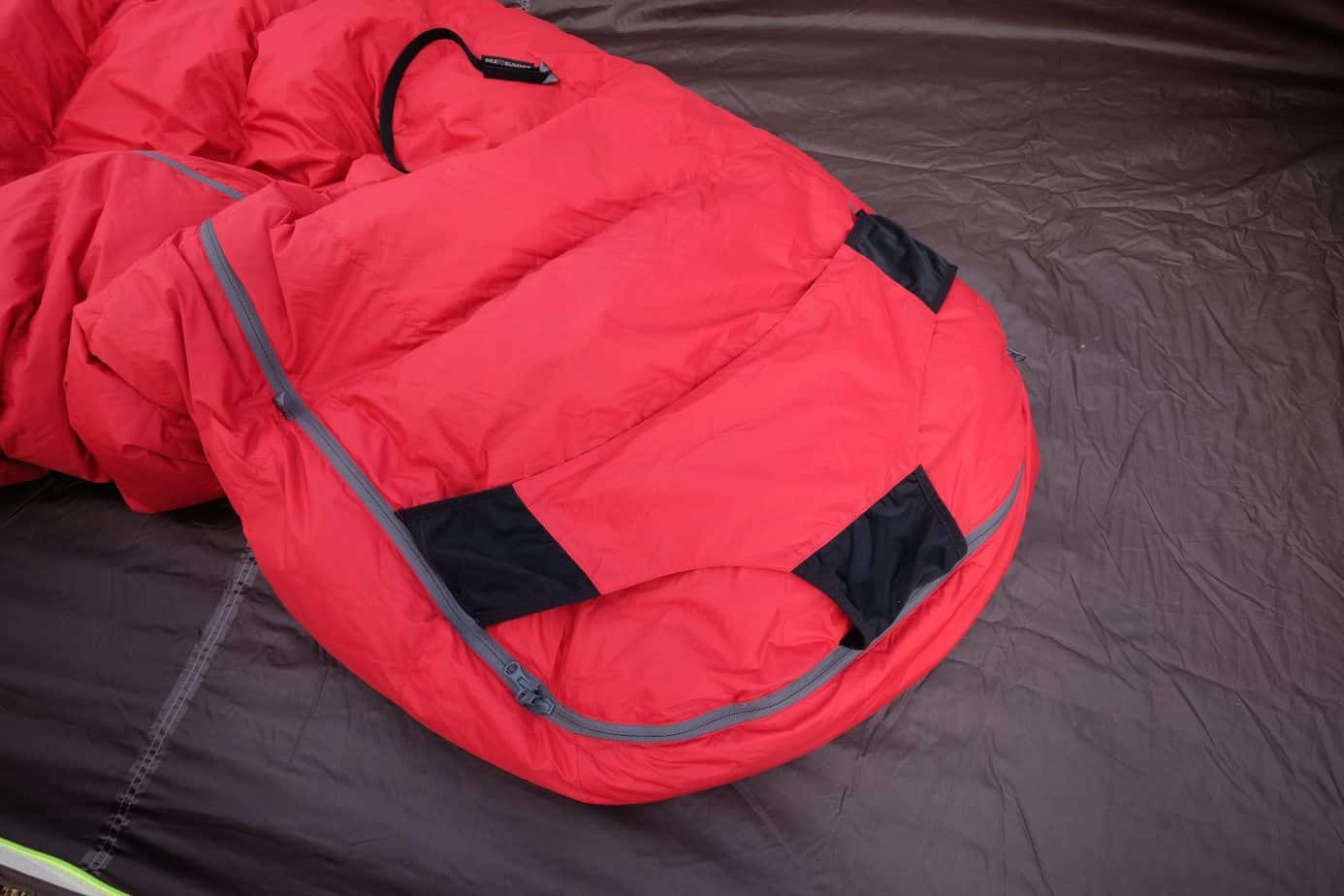
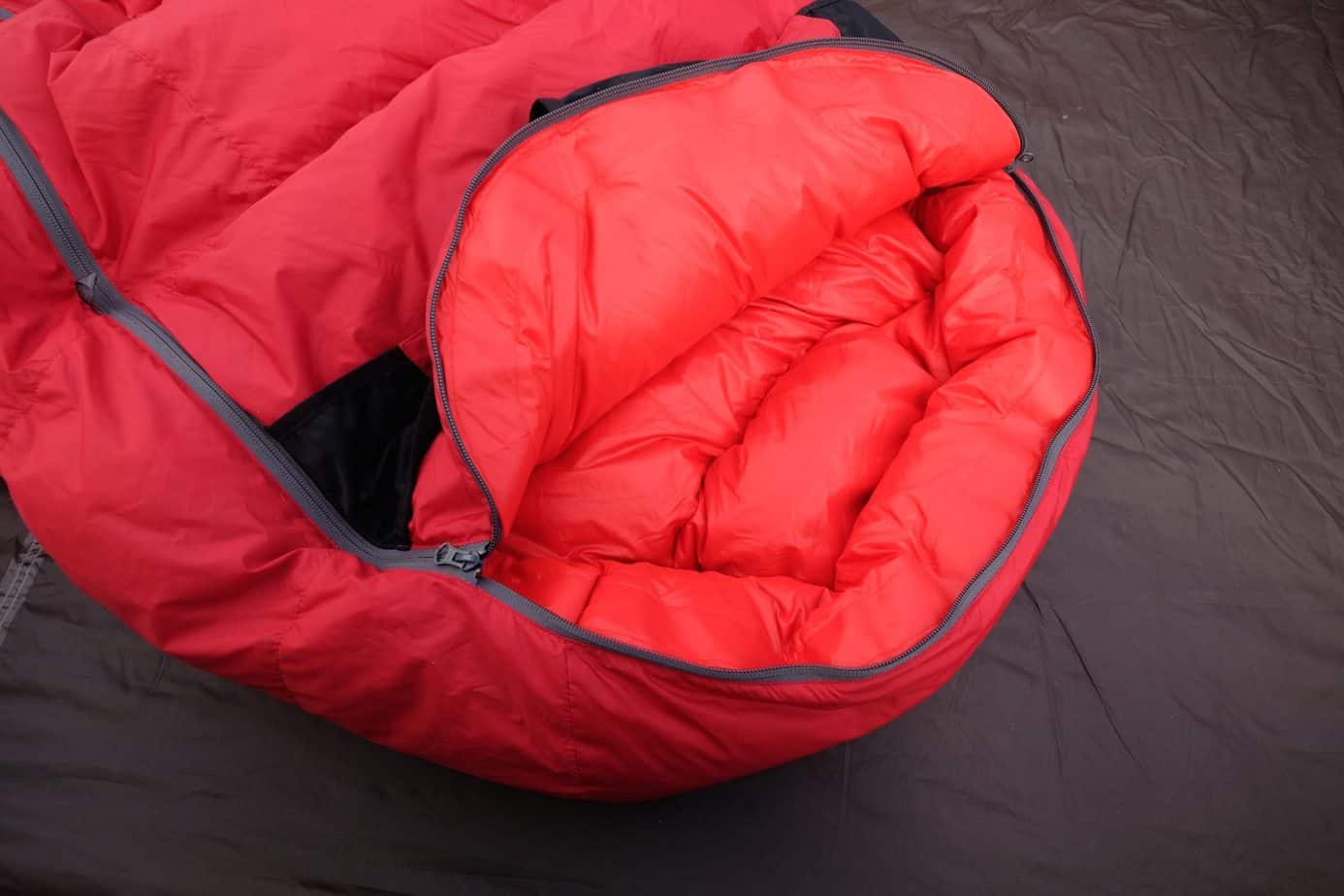
Over the course of the second half of this year I had a multitude of opportunities to test the Bascecamp BcII and every time I slipped into its comfy interior, I fell asleep immediately. With ample space to sprawl out, particularly with no threat of sliding off the pad below, I found my slumber was not often interrupted by efforts to get re-situated in the middle of the night. For warm nights, I left the bottom half at home and was surprised how large the upper comforter section was. That layer has a beveled perimeter that wraps around the sleeper helping it to stay in position.
Although cut wide and weighing a pound more than Sea to Summit’s lightest sleeping bags, I’d have no hesitation using it for lightweight adventures. Thanks to the 750+ down fill and the thin shell fabrics, the packed size is quite small. The Basecamp BcII is a significant improvement over the traditional sleeping bag without compromising any of the attributes we have all come to appreciate over the years. The versatility is a compelling reason to own the BcII, but after a dozen nights of use, I would recommend it strictly based on the quality of sleep comfort it affords. Set an alarm clock if you want to get up early. It’s a tough task getting motivated to exit the BcII on a cold morning.
MSRP $378
Added luxury with Sea to Summit’s sublime pad and pillow combo
New to Sea to Summit sleep systems is a series of foam-filled self inflating mats. The mat I chose to pair to the Basecamp BcII is the plush Comfort Plus S.I. With a 4.1 R-value it seemed like a logical choice given the bag’s 15ºF lower temp range. At 20-inches wide, 6-feet long, and a plump 3, 1/8th-inch thick, it’s perfectly sized for my frame and weight. The internal foam has been cored-out with Sea to Summit’s unique Delta Core process which bolsters the cushiness of the mat while reducing weight and bulk. Like the Basecamp, the mat isn’t ultra-light at 31.6 ounces, but it is respectfully low weight for most applications. Like other StS mats, it uses their high flow-rate multifunction valve for easy inflation and fine tuning of air pressure.


Completeing the trifecta of blissful sleep is Sea to Summit’s own Aeros Pillow Premium. No larger than an orange when stowed, it inflates to a large cranial landing pad of 12×17-inches and is just over 5-inches thick. The top cover is made of a soft brushed micro-fiber for maximum comfort and the contoured shape cradles your weary head for a sound night’s sleep.

